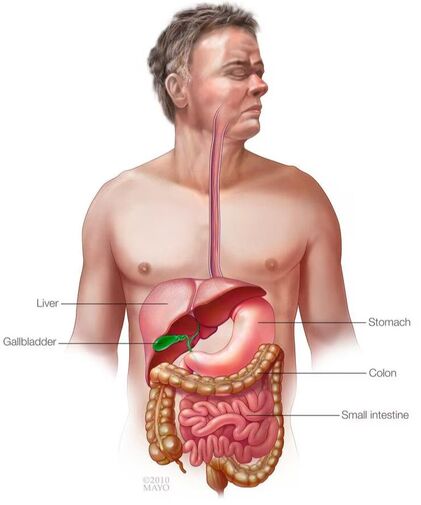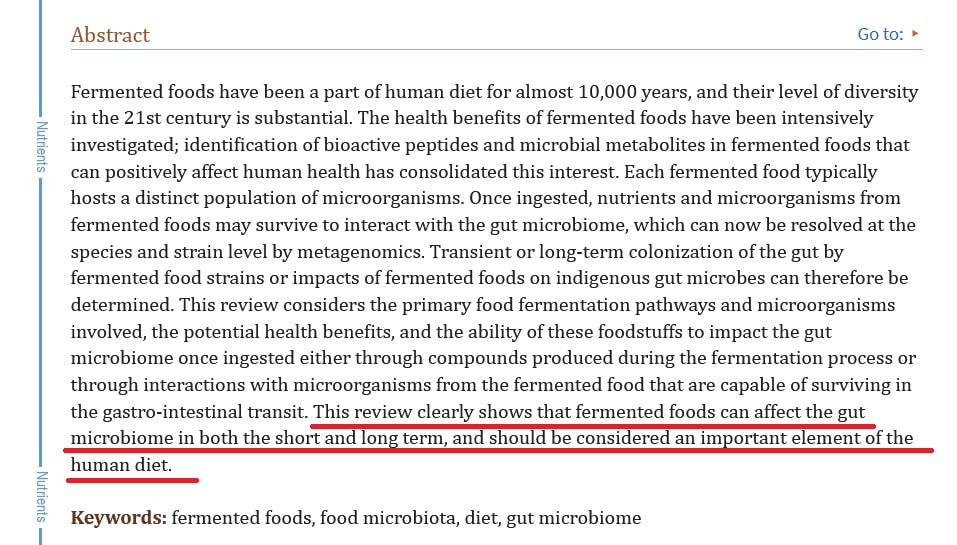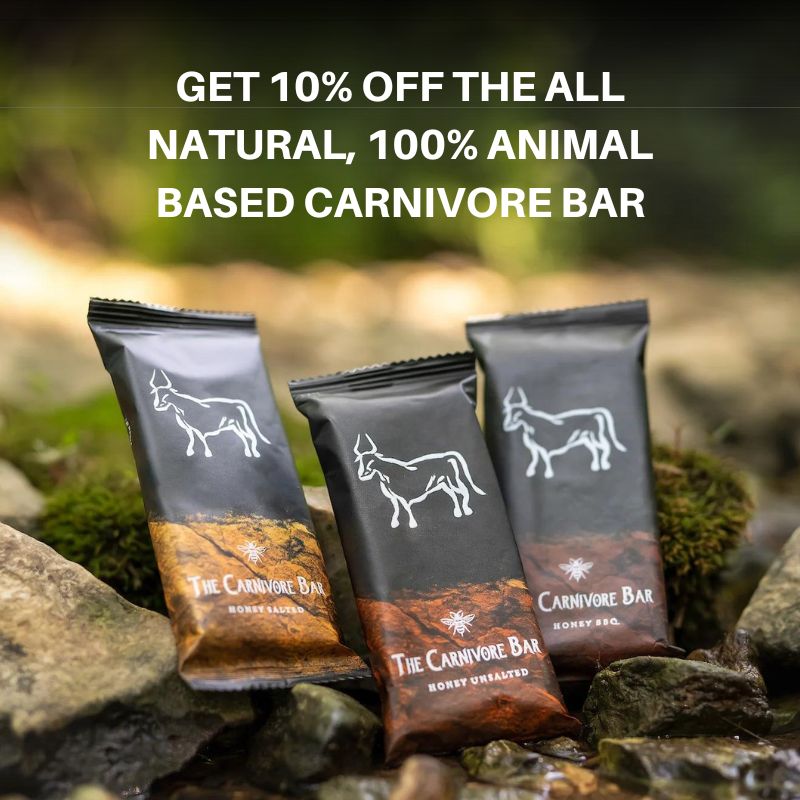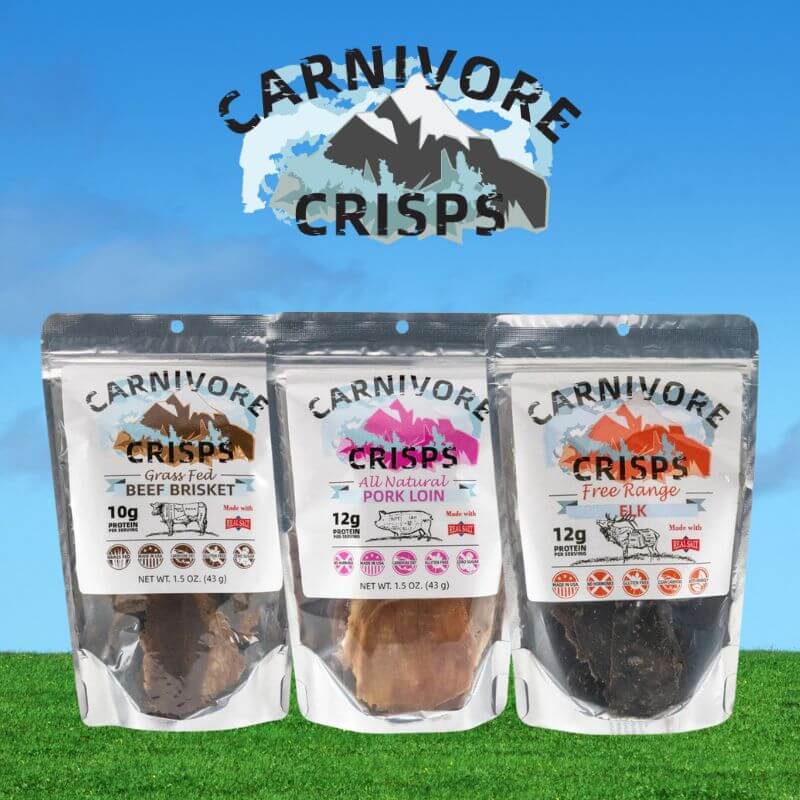|
THE COMPLETE
CARNIVORE DIET GUIDE
Learn how to lose weight, fix your gut and cure autoimmune symptoms with our free Carnivore Diet guide.
|
|
The quest for optimal digestive health and relief from gastrointestinal ailments has spurred a growing interest in natural remedies. Among the various conditions that challenge our gut health, Small Intestinal Bacterial Overgrowth (SIBO) is a significant concern due to the increased number of diagnoses. SIBO occurs when bacteria that should primarily inhabit the colon find their way into the small intestine, leading to uncomfortable symptoms, including bloating, abdominal pain, and irregular bowel movements. Some Lesser Known Symptoms of SIBO While SIBO itself is not considered an] stand alone autoimmune disorder, it can lead to various health problems, and there is some evidence to suggest that it may contribute to or exacerbate certain autoimmune issues. Here are a few autoimmune conditions that may be associated with or worsened by SIBO:
If you or someone you know suffers from any of the issues above, they could have SIBO and if they do, this SIBO cure could help! Why Carnivore "Almost" Works For SIBO While conventional treatments for SIBO often involve antibiotics, there's a burgeoning movement towards holistic, diet-based approaches that aim to restore balance to the gut without the need for pharmaceutical intervention. One of such approaches are a strict carnivore diet and it works because carnivore starves the overgrown bacteria of carbohydrates and prebiotic fiber they feed on. However, this puts SIBO in remission and isn't a permanent solution. To create a permanenet solution, we need to restore keystone strains of bacteria in the small intestine so that there's enough of them to "fight" the overgrown bacteria and suppress it back down into the colon. Introducing A permanent SIBO Cure In this article, we'll explore a four-week protocol that combines the principles of the carnivore diet with the strategic use of probiotics to alleviate SIBO symptoms and promote gut health and restore natural balance. Our journey begins with a week of strict carnivore eating, designed to starve the bacteria in the small intestine that should naturally reside in the colon. From there, we gradually introduce specific probiotic strains, fermented foods, and prebiotics to rebalance the gut microbiome and relieve the discomfort associated with SIBO. The idea of combining the carnivore diet with probiotics may seem unconventional. Still, it's grounded in emerging research and the understanding that diet plays a pivotal role in the composition of our gut microbiome. As we delve into each week of this protocol, we'll explore the science behind these dietary choices and offer practical guidance to help you embark on this journey toward improved gut health. Before you begin, it's important to note that individual responses to this protocol may vary, and consulting with a healthcare professional is essential, especially if you suspect you have SIBO. Additionally, this protocol has potential risks or contraindications, which we will address in due course. But with dedication, careful monitoring, and a commitment to your well-being, this holistic approach offers a path to healing from SIBO that aligns with your preferences and values. So, let's embark on this journey to discover how the marriage of the carnivore diet and specific probiotics can help in your quest to overcome SIBO and reclaim your digestive health. Week 1: Starving the Bacteria In the pursuit of alleviating Small Intestinal Bacterial Overgrowth (SIBO), our journey begins with a fundamental dietary shift. Week 1 focuses on a strict carnivore diet, a nutritional approach gaining attention for its potential to starve the bacteria that have found their way into the small intestine. Why the Carnivore Diet? As the name suggests, the carnivore diet is primarily based on animal products. This means it's extremely low in carbohydrates, fiber, and plant-based foods, which are the primary sources of sustenance for gut bacteria. By adopting this diet, you're essentially cutting off the food supply to the bacteria that shouldn't be flourishing in the small intestine in the first place. Guidelines for Week 1:
What to Expect: Transitioning to a strict carnivore diet may present some challenges, especially if you're accustomed to a more diverse diet. Here are some tips to help you navigate Week 1 successfully:
As you progress through Week 1, remember that this phase is not a long-term dietary recommendation. It's a strategic approach to temporarily disrupt the environment that allows SIBO to thrive in the small intestine. In the next section, we'll explore how specific probiotics can complement this dietary shift in Week 2. Week 2: Introducing Probiotics After a week of strict adherence to the carnivore diet to starve the problematic bacteria in the small intestine, it's time to introduce a key component of our SIBO-healing protocol: probiotics. The Role of Probiotics in SIBO Treatment: Probiotics are live microorganisms that confer health benefits when consumed in adequate amounts. In the context of SIBO, they play a crucial role in restoring a balanced gut microbiome. The specific strains we will focus on in Week 2 are L. Reuteri, L. Gasseri, and Bacillus Coagulans. These strains have shown promise in promoting gut health and could aid in combating SIBO. Lactobacillus Reuteri Lactobacillus reuteri (L. reuteri) is a beneficial probiotic strain naturally found in the human digestive tract and breast milk. It offers potential benefits for gut health, immune support, heart health, bone health, and skin health. L. reuteri is available in various supplements and probiotic products. Consulting with a healthcare professional before use is recommended, particularly for individuals with specific health concerns. Lactobacillus Gasseri: Lactobacillus gasseri (L. gasseri) is known for its beneficial effects on the gut microbiome and digestion. This probiotic strain helps maintain a balanced and healthy gut microbiome, essential for optimal digestive function. L. gasseri can alleviate symptoms of digestive discomfort, such as bloating and irregular bowel movements, by promoting the growth of beneficial gut bacteria and inhibiting harmful microorganisms. Its presence in the gastrointestinal tract contributes to a harmonious gut environment, supporting efficient digestion and overall gut health. Bacillus Coagulans: Bacillus coagulans (B. coagulans) is a probiotic strain that can benefit the gut microbiome and digestion, particularly in Small Intestinal Bacterial Overgrowth (SIBO). This resilient probiotic strain can help restore balance to the gut by promoting the growth of beneficial bacteria and suppressing the overgrowth of harmful microbes in the small intestine, a common issue in SIBO. Creating Probiotic Yogurt: You can buy these strains in small capsules, but they don't come in the amounts needed to repopulate the gut. So, we will ferment them to increase the number of CFUs (Colony Forming Units) in each serving. One effective way to increase these probiotics CFUs from 1 Billion to 100+ Billion CFUs is by making probiotic yogurt at home. Here's how: Ingredients:
Instructions:
Consuming Probiotic Yogurt: During Week 2, consume a small serving of probiotic yogurt daily. This provides a controlled dose of the selected probiotic strains and supports reestablishing a healthy gut microbiome. Consistency Matters: It's essential to be consistent in consuming your homemade probiotic yogurt. The beneficial bacteria need time to establish themselves in your gut and potentially crowd out the harmful bacteria associated with SIBO. Continue this practice throughout the week. Monitoring Your Progress: As you progress through Week 2, pay attention to any changes in your digestive health. Some individuals may notice subtle improvements in symptoms like bloating, gas, or irregular bowel movements. Keep a diary to track these changes, which will help gauge the protocol's effectiveness. Remember that individual responses to probiotics can vary, so it's essential to remain patient and monitor how your body responds. In the next section, we'll explore Week 3, where we'll further diversify our approach by incorporating fermented foods into our diet to support the healing process. Week 3: Incorporating Fermented FoodsAs our SIBO-healing journey continues, Week 3 introduces a delightful and healthful addition to your diet—fermented foods. Fermentation is a time-honored method of preserving and enhancing the nutritional value of foods while promoting a diverse and balanced gut microbiome. Why Fermented Foods? Fermented foods are rich in beneficial bacteria or probiotics, which can help restore harmony to your gut microbiome. They provide various probiotic strains, often different from those found in supplements, creating a more comprehensive approach to improving gut health. Fermented Food Options:
How to Incorporate Fermented Foods:
Homemade Fermented Foods: If you're feeling adventurous, try making your own fermented foods at home. This allows you to control the ingredients and fermentation time, ensuring the highest quality probiotics. Monitoring Your Progress: As you delve into Week 3, continue monitoring your digestive health. You may start noticing improvements in your overall well-being, including reduced bloating, more regular bowel movements, and enhanced energy levels. These positive changes indicate the benefits of a diversified diet that includes fermented foods. Important Considerations:
With the addition of fermented foods in Week 3, our protocol continues to support your gut's natural healing process. In the next section, Week 4, we'll explore the gradual reintroduction of prebiotic foods, bringing us one step closer to a balanced and thriving gut microbiome. Week 4: Reintroducing Prebiotics As we approach the final week of our SIBO-healing protocol, it's time to reintroduce an essential element for a thriving gut microbiome—prebiotic foods. Prebiotics are non-digestible fibers that nourish and support the growth of beneficial gut bacteria. They lay the foundation for a balanced and diverse microbial ecosystem. Why Reintroduce Prebiotics? While the first three weeks focused on starving harmful bacteria and introducing probiotics and fermented foods, Week 4 shifts our attention to the nurturing phase. Prebiotics provide the necessary sustenance for the beneficial bacteria in your gut to flourish. Prebiotic-Rich Foods:
How to Reintroduce Prebiotics:
Benefits of Prebiotics:
Monitoring Your Progress: As you reintroduce prebiotic foods, keep a close eye on your digestive health. Positive changes include increased regularity, reduced bloating, and improved overall well-being. Remember to continue tracking your symptoms in your diary. Long-Term Gut Health: While Week 4 marks the conclusion of our 4-week protocol, maintaining a diet rich in prebiotic foods is critical to long-term gut health. It's a sustainable approach that can help prevent the recurrence of SIBO and support ongoing digestive wellness. As you wrap up this protocol, celebrate your commitment to improving your gut health and consider incorporating these dietary principles into your daily life. However, consult a healthcare professional for further guidance if you ever experience a resurgence of SIBO symptoms. Our journey through the carnivore diet, probiotics, fermented foods, and prebiotics has laid a foundation for a resilient and balanced gut microbiome. Remember that your gut health is a dynamic and ongoing process, and with dedication and awareness, you can achieve and maintain the digestive well-being you deserve. Monitoring Progress Throughout this 4-week protocol, keeping a close eye on your digestive health is essential. Here's a concise guide:
Remember, your journey to digestive wellness is unique, and monitoring your progress is valuable in achieving lasting results. Summing Up In our quest to conquer Small Intestinal Bacterial Overgrowth (SIBO) through a 4-week protocol, we've embarked on a holistic journey toward digestive well-being. This protocol combines the principles of the carnivore diet, strategic probiotic use, fermented foods, and prebiotics to promote gut health and alleviate SIBO symptoms.
We began by starving the problematic bacteria in Week 1 and introducing beneficial probiotics in Week 2. In Week 3, we diversified our approach with fermented foods, and in Week 4, we nurtured the growth of beneficial gut bacteria with prebiotic-rich foods. As we conclude our journey, it's crucial to emphasize a few key points:
In your pursuit of digestive well-being, remember that your gut is a dynamic ecosystem capable of resilience and transformation. By embracing a diet rich in whole foods, mindful dietary choices, and the support of beneficial bacteria, you empower your body to achieve and maintain the balance and vitality it deserves. Here's to your journey toward optimal gut health and a life free from the discomfort of SIBO. May it be a path paved with renewed well-being and a future filled with digestive vitality.
2 Comments
Ashley N Ranaudo
9/27/2023 09:58:12 am
Do you recommend continuing the probiotic yogurt throughout the diet or 3 weeks or just week 2?
Reply
Sharon Erica
11/10/2023 05:42:51 am
I was wondering the same thing re continuing with the yoghurt
Reply
Leave a Reply. |
Carnivore Diet Recipes & Meal PlansOur Trusted Partners
Popular Guides
|












